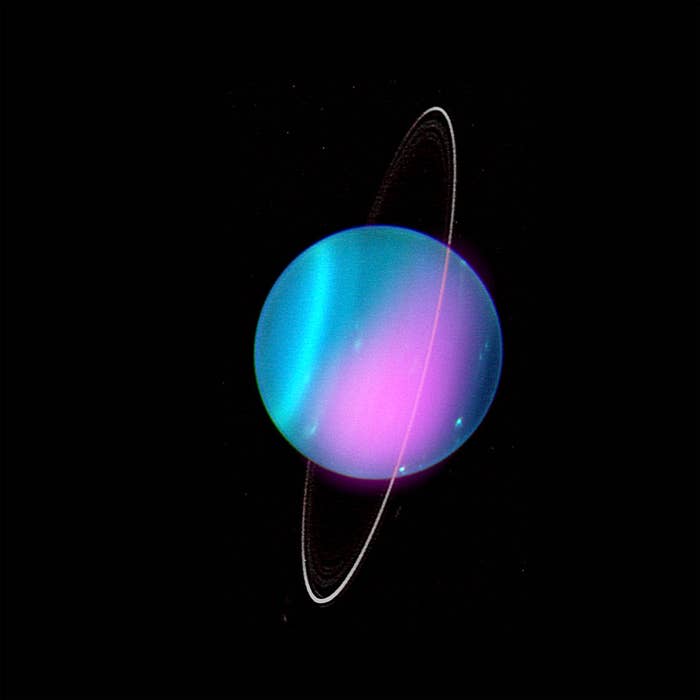For the first time, astronomers have detected X-rays coming from Uranus, the notorious seventh planet from the Sun.
The X-rays in question were detected using NASA’s Chandra X-ray Observatory. Earlier this week, NASA said the new study could help scientists at large learn more about the planet, which notably boasts a diameter four times that of Earth’s.
Researchers spotted “a clear detection of X-rays” from a Chandra observation in 2002 that was only recently analyzed, as well as a possible flare of X-rays in an observation from 2017. In the photo below, shared by NASA this week, the 2002 X-ray image of Uranus is show in pink superimposed on an optimal image from the Keck-I Telescope circa another study in 2004.

Per astronomers, both Jupiter and Saturn scatter X-ray light given off by the Sun, not unlike how Earth’s atmosphere scatters the light of the Sun. At first, authors of the new study were convinced that the bulk of the detected X-rays would be from scattering of this variety. However, per a news release, there are “tantalizing hints” that there’s “at least” one alternate source of X-rays. Confirming another source for the X-rays could prove key in gaining a deeper understanding of Uranus.
Among the possible explanations for this alternate source is that Uranus—like Saturn—is having the mysterious X-rays made by its rings.
For a much deeper dive on the Uranus study, peep this paper from the Journal of Geophysical Research.
These developments from Uranus arrive amid a particularly stacked time for news of the space variety. Last month, the final two crew members were announced for SpaceX’s impending all-civilian mission to space.
And lest we forget, the UAP (also known as UFO) phenomenon has been enjoying a mainstream breakthrough in recent years thanks in large part to the work of To the Stars Academy of Arts & Science.

